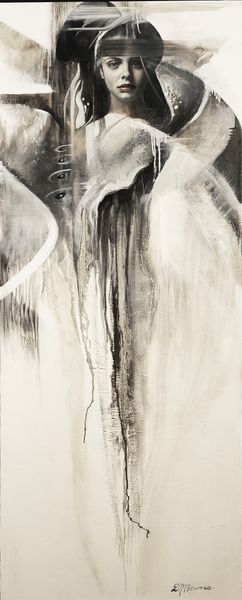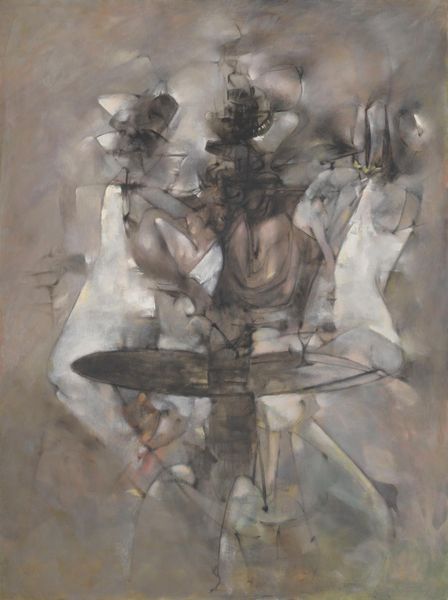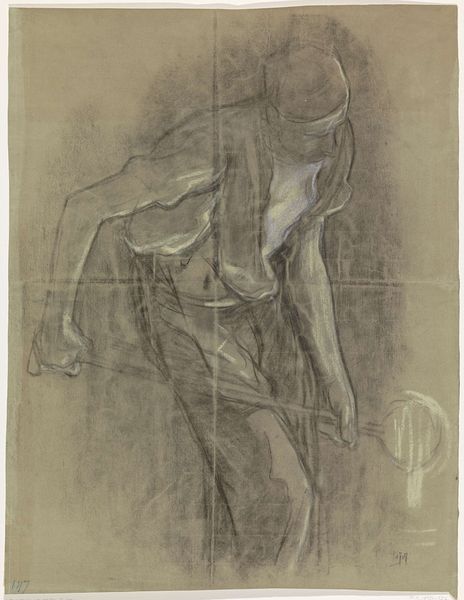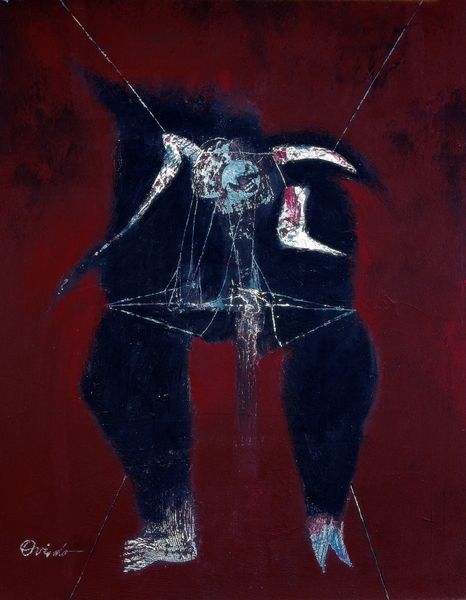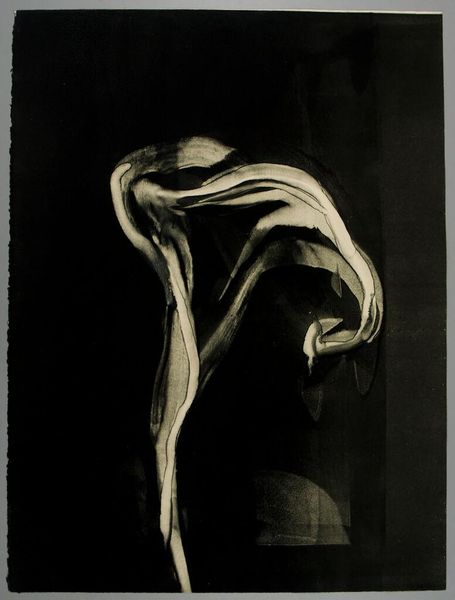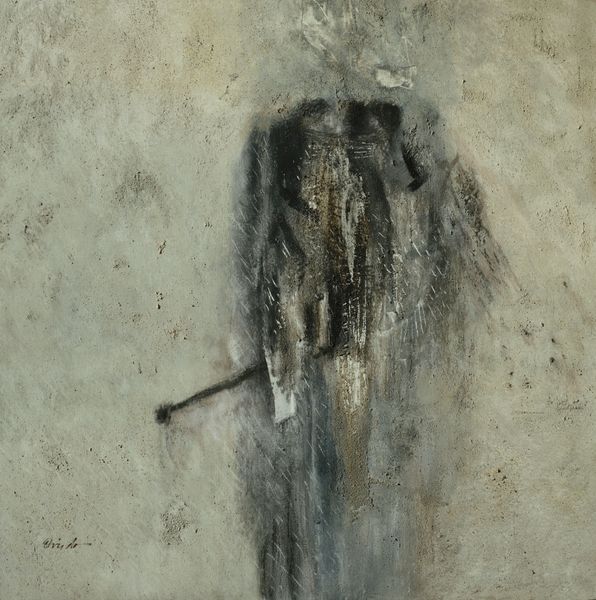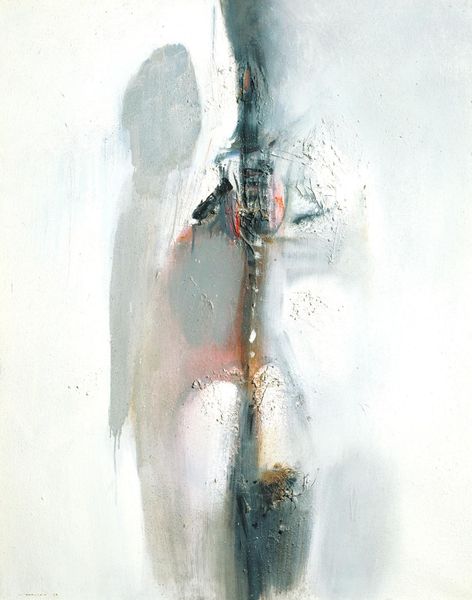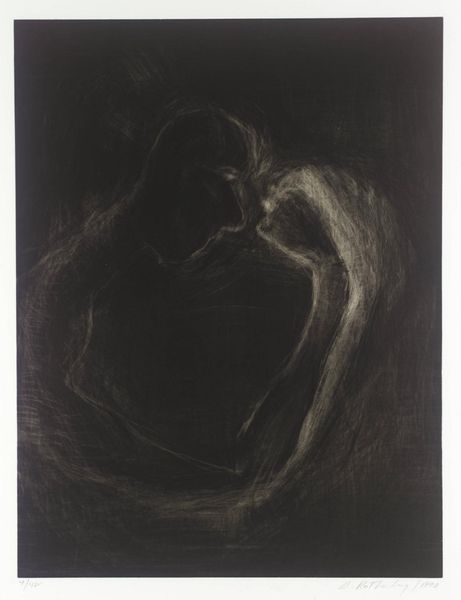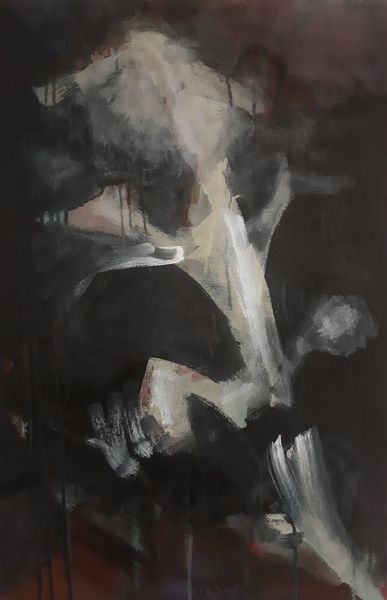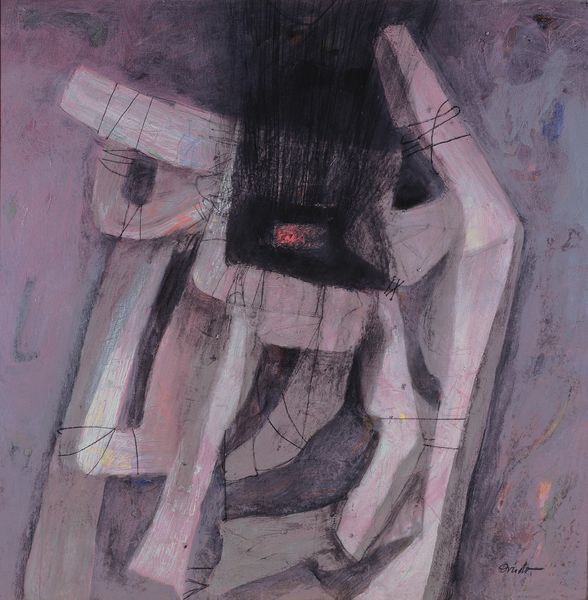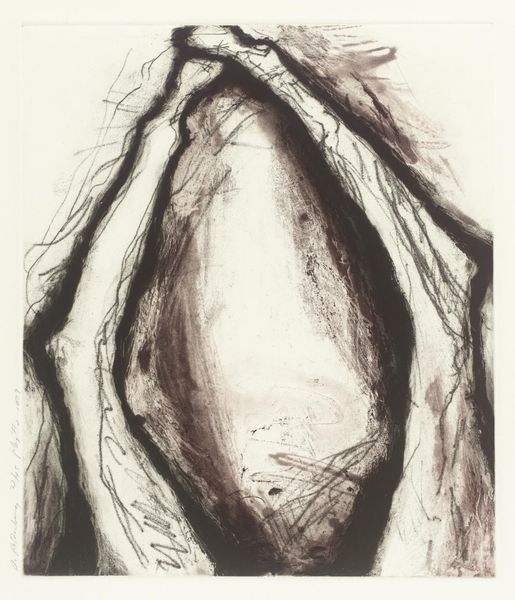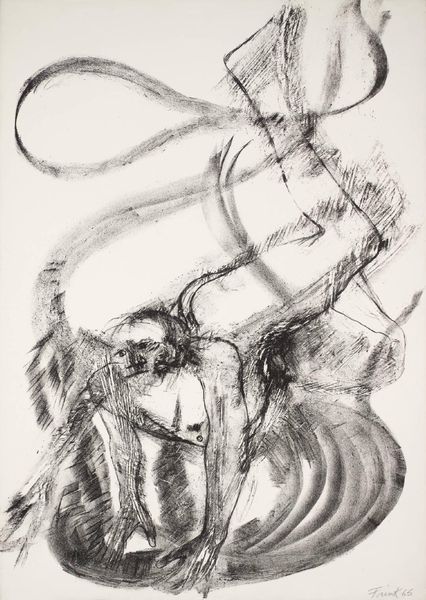
Dimensions: 62 x 48.5 cm
Copyright: Francis Bacon,Fair Use
Editor: We're looking at Francis Bacon's 1933 charcoal drawing, "Crucifixion." It’s overwhelmingly bleak; a ghostly figure barely discernible against this murky background. What do you see in this piece? Curator: Oh, darling, this early Bacon... it’s a primal scream on paper. It's interesting because in 1933 Bacon had yet to find his voice. You can see echoes of Picasso and even the surrealists swirling around here. But this rawness! It is truly compelling. Look at how the charcoal bleeds, almost weeping. Editor: It feels like the figure is disintegrating. Curator: Exactly! That disintegration—isn't that a perfect metaphor for the collapse of faith, the unraveling of the old world order during the interwar period? Do you see any elegance in its terror, or perhaps beauty even in the tragedy depicted here? Editor: It’s hard to see beauty exactly, but there is a strange allure, a kind of disturbing energy. Curator: That’s the genius of Bacon, my dear! He doesn’t give us easy answers, doesn’t offer solace. Instead, he drags us into the mud of human experience, into the uncomfortable truth of our own mortality. It's unnerving. Editor: I came in expecting religious symbolism, but I'm leaving with this profound sense of human frailty. Curator: Yes. That, in essence, is Bacon's religion—the religion of the raw nerve, of exposed bone. A discomfort we must consider.
Comments
No comments
Be the first to comment and join the conversation on the ultimate creative platform.
